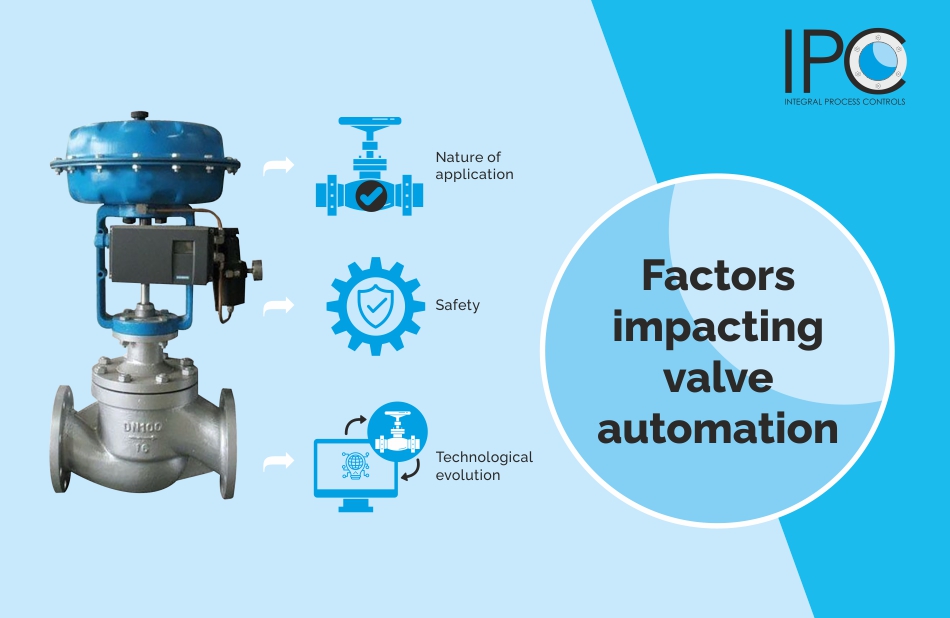Valve Automation: The Key to Resolving Critical Questions in Process Control
How do I eliminate human errors and improve the safety in process control? How do I improve the efficiency of valves that are installed in remote locations and require very little servicing? How do I make my operations more cost-effective? The answer to these questions can be found in a single solution: Valve automation.
Valve automation significantly improves the safety, efficiency, and reliability of the process. Close to 75% of valves are automated in highly critical applications. In some industries, the rate of automation stands around 30% but is rapidly rising.
Implementing automation is often viewed from the prism of high costs. However, that is not the only factor that impacts the successful implementation of valve automation.
Do the following factors feature in your decision to implement valve automation?
The nature of the application has a close relation to the type of valve actuators deployed. In critical applications such as oil and gas, the oil extracted at high pressure can itself be used to operate valves, which saves costs. Additionally. small cylinders of the hydraulic valves serve to significantly offset the high costs and risks associated with high-pressure hydraulic fluids. On the other hand, pneumatic valves have a much shorter response time than electrically operated valves.
Apart from lowering the long-term costs, valve automation makes process control operations safer and almost error-free. However, the type of automated valves you choose can impact the degree of safety of your plant. For instance, hydraulic systems face stringent regulations and have environmental issues related to handling and disposal. Pneumatic valves are the safest of all valves. In case of issues such as failure of power, they come to a fail-safe position whereas electric valves may remain in previous failed position upon loss of power. Electrical fail-safe actuators are very expensive.
Communication is the key ingredient in valve automation. With new communication protocols evolving, valves must adapt to match with them. Valve positioners must be able to communicate with a broad range of communication protocols from conventional analogue systems to MODBUS, or Foundation Fieldbus.
Automatic valves must be regularly upgraded to fit modern communication protocols and IT systems for efficient performance.
Conclusion: The future of valve automation
Valve Automation is the process of adding a valve actuator and control system to the valve.

